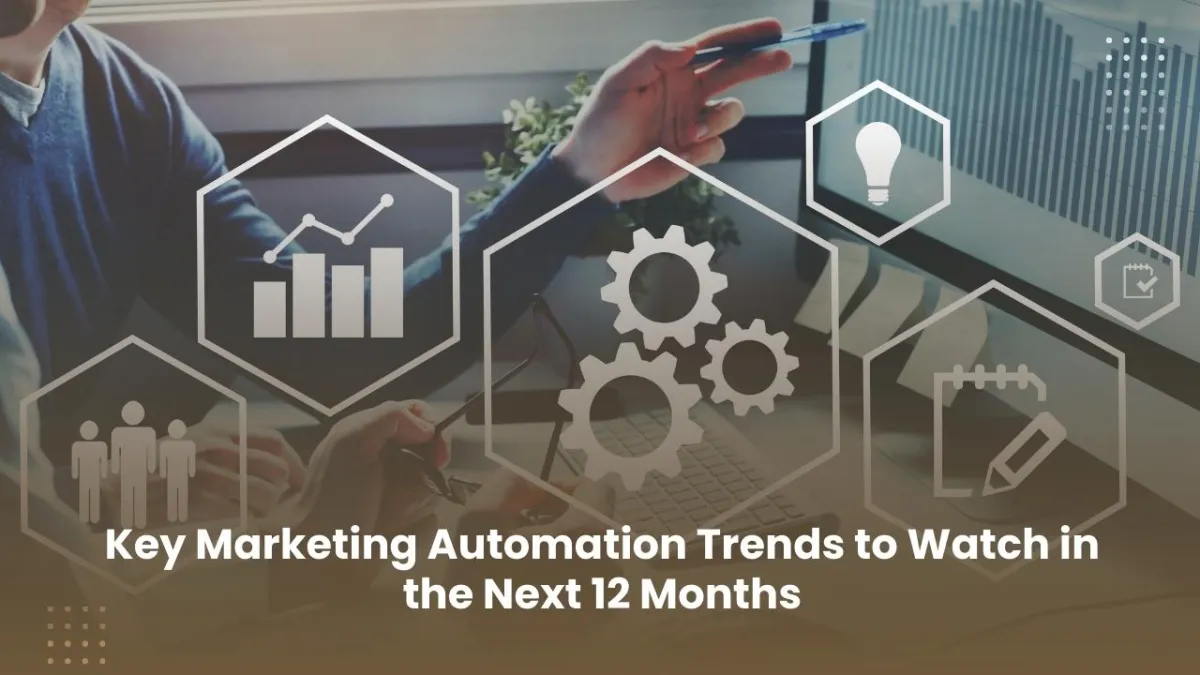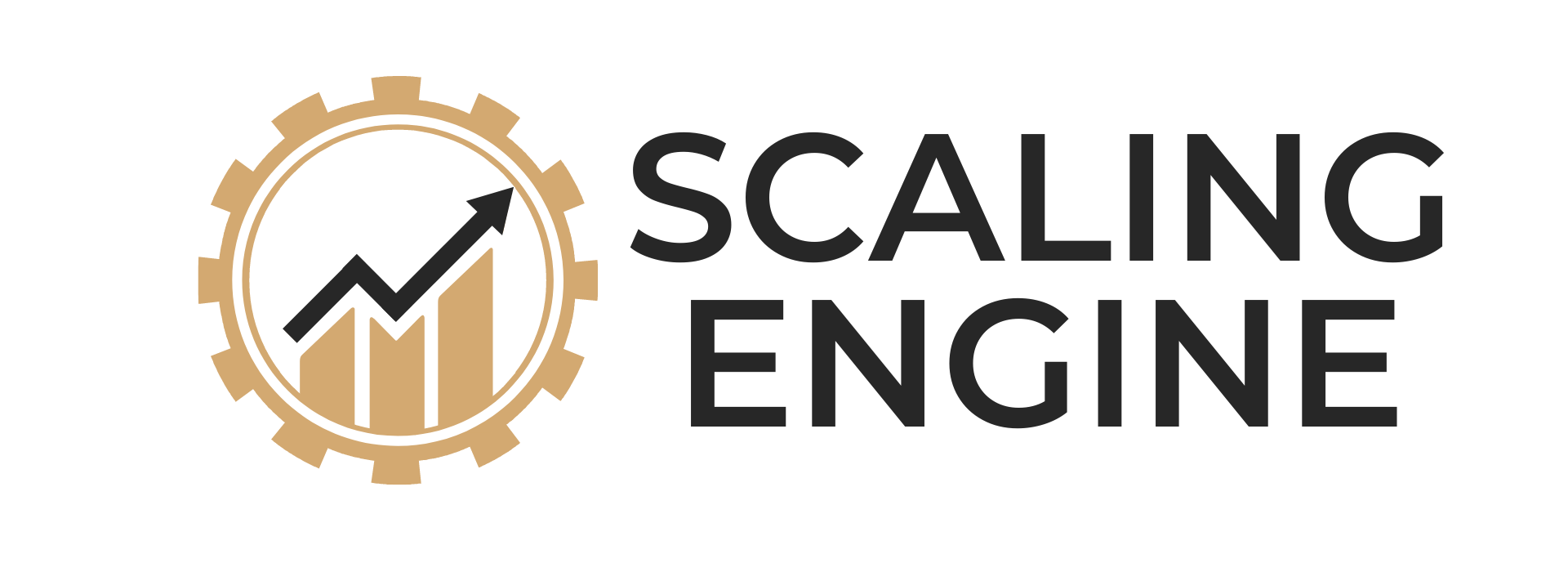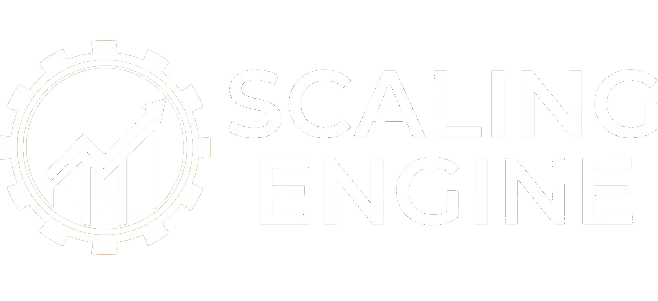
Top Marketing Automation Trends to Watch in 2025 | Scaling Engine
Key Marketing Automation Trends to Watch in the Next 12 Months
Marketing automation is no longer just a buzzword. It’s a necessity for businesses aiming to scale and maintain a competitive edge. As we look ahead to the next 12 months, several key trends in marketing automation are expected to shape the way businesses approach their marketing strategies, particularly in the business-to-business (B2B) sector. As a marketing automation manager, it’s essential to stay ahead of these trends to ensure your strategies are future-proof and data-driven.
In this article, we’ll explore the most impactful marketing automation trends that will define the landscape over the coming year. Whether you’re just starting to implement automation or looking to optimize your existing systems, these insights will help guide your efforts toward measurable success.
1. AI-Powered Marketing Automation: A Game-Changer for Businesses
Artificial Intelligence (AI) has been a transformative force across many industries, and marketing is no exception. AI-powered marketing automation tools are now more sophisticated than ever, enabling businesses to create personalized, data-driven campaigns at scale.
How AI is Enhancing Automation
AI can analyze vast amounts of data in real-time, identify patterns, and optimize campaigns to ensure the right message reaches the right person at the right time. By incorporating machine learning algorithms into marketing automation platforms, businesses can automate the process of audience segmentation, content personalization, and predictive analytics.
For business-to-business marketing automation, this means being able to identify high-value prospects, predict buying behavior, and deliver tailored content that resonates with specific buyer personas.
AI Trends to Watch in 2025
Predictive Analytics: AI can help predict customer behavior, allowing you to create more targeted campaigns.
Chatbots & Conversational Marketing: AI-driven chatbots will provide instant responses, driving engagement and improving lead nurturing.
Dynamic Content Personalization: AI will continue to refine content personalization, delivering highly relevant content at the most opportune time in the customer journey.
The integration of AI in marketing automation tools is poised to take personalization to new heights, making it essential for marketing automation managers to stay on top of these innovations.
2. Enhanced Customer Journey Mapping
Customer journey mapping has always been crucial to understanding how prospects interact with your brand. However, as marketing automation trends evolve, businesses are increasingly adopting advanced technologies to track and map these journeys in real time.
Why Real-Time Mapping is Essential
In today’s fast-paced digital landscape, real-time insights are critical. Automated systems can now track every interaction across various touchpoints—emails, social media, websites, and more—allowing businesses to adjust their strategies on the fly.
For B2B marketing automation, understanding the path that leads to conversion is key to improving sales and marketing alignment. This means going beyond traditional funnel metrics and incorporating data that reflects individual buyer journeys.
Key Features of Enhanced Customer Journey Mapping
Omnichannel Tracking: With automation, you can track customer interactions across email, social media, and other channels in one unified dashboard.
Behavioral Triggers: Automated systems can detect when a prospect takes a specific action (like visiting a product page) and trigger follow-up emails or offers.
Continuous Optimization: By constantly analyzing customer interactions, businesses can optimize their journey maps and ensure they’re meeting customer expectations at every stage.
In 2025, enhanced customer journey mapping will empower businesses to create seamless experiences that drive conversions and build long-term customer loyalty.
3. Hyper-Personalization at Scale
Personalization has always been a key element of successful marketing campaigns. However, as automation tools become more advanced, businesses can now achieve hyper-personalization at scale—meaning tailoring content, offers, and communication to each customer.
Why Hyper-Personalization Matters
In an age where consumers are bombarded with generic content, delivering highly relevant, personalized experiences is essential to stand out. Automated systems can leverage customer data to create highly personalized emails, landing pages, product recommendations, and more.
For B2B companies, this means offering relevant content and solutions that align with a prospect’s specific needs, pain points, and business goals.
How to Implement Hyper-Personalization
Data-Driven Insights: Utilize data from CRM systems, website interactions, and past purchase behavior to create tailored messaging.
Dynamic Content: Use dynamic content blocks in emails or websites that change based on the visitor’s behavior, industry, or previous interactions.
AI-Based Recommendations: Implement AI-powered tools that suggest products or services based on a prospect’s previous actions.
As businesses embrace hyper-personalization, they’ll be able to build stronger relationships with their customers, driving engagement and improving conversion rates.
4. Automation Integration Across the Tech Stack
As marketing automation evolves, it’s not enough to simply have an automated email system. The next frontier is full tech stack integration—where all your automation tools work seamlessly together to deliver more cohesive and effective marketing strategies.
Why Integration is Key to Success
Integrating automation tools with your CRM, analytics platforms, and other business systems ensures that your marketing efforts are aligned with sales and customer service teams. For example, syncing your marketing automation platform with a CRM system allows sales teams to access real-time data about leads and customer interactions, helping them close deals faster.
The Future of Automation Integration
Unified Platforms: Expect to see more all-in-one marketing automation solutions that allow businesses to manage campaigns, analytics, and customer data from a single platform.
Cross-Platform Analytics: Integration will enable businesses to measure and optimize marketing performance across all touchpoints, providing a more holistic view of their efforts.
Collaborative Automation: Marketing, sales, and customer service teams will benefit from a shared automation platform that enables better collaboration and faster response times.
Automation integration will streamline workflows, reduce silos, and increase the overall efficiency of marketing campaigns.
5. Marketing Automation for Lead Scoring and Nurturing
Lead scoring and nurturing are foundational aspects of any B2B marketing automation strategy. As more businesses adopt automated systems, lead-scoring models will become more sophisticated and data-driven.
The Role of Automation in Lead Scoring
Automation tools can help you define and score leads based on actions they take on your website, interactions with your emails, or engagement with your content. For marketing automation managers, the key will be to ensure that these scores are accurate and updated in real-time, so sales teams can focus on the hottest leads.
Advanced Lead Scoring Models
Behavioral Scoring: Track specific actions, such as downloading white papers, attending webinars, or requesting demos, to assign points to leads.
Demographic Scoring: Combine behavioral data with demographic information to better understand whether a lead fits your ideal customer profile.
Predictive Scoring: Use AI-powered predictive models to identify leads that are most likely to convert based on historical data.
By automating lead scoring and nurturing, businesses can ensure they’re focusing on the leads most likely to convert, improving both efficiency and conversion rates.
6. The Rise of Video Marketing Automation
Video marketing has become an essential part of any digital marketing strategy, but automating video distribution and personalization is now the next big thing. As marketing automation continues to evolve, video marketing automation will be at the forefront of customer engagement.
Why Video Marketing is Effective
Video is one of the most engaging forms of content, and it allows businesses to connect with their audience on a deeper, more personal level. From product demos to customer testimonials, video content can significantly increase engagement and drive conversions.
However, the real power lies in automation. Automated video distribution systems allow businesses to deliver personalized video content based on customer actions and preferences, making the video experience even more engaging.
Video Marketing Automation Features to Watch in 2025
Personalized Video Content: With marketing automation tools, businesses can create videos that adapt based on a customer's behavior, interests, and past interactions.
Automated Video Emails: Automatically send personalized video content through email campaigns to increase click-through rates and engagement.
Video Retargeting: Use automated retargeting campaigns to serve video content to users who have interacted with your brand but haven't converted yet.
In the next 12 months, expect video marketing automation to grow, allowing businesses to create more personalized, engaging, and efficient video marketing campaigns.
7. The Integration of Voice Search in Marketing Automation
As voice search continues to gain traction, businesses must adapt their marketing strategies to stay relevant. Voice-activated devices like Alexa, Google Assistant, and Siri are increasingly being used to search for products and services, and integrating voice search into your marketing automation strategy can help capture this growing segment.
Why Voice Search Integration Matters
Voice search is quickly becoming a primary mode of interaction with the web, especially for mobile users. By incorporating voice search optimization into your marketing automation tools, you can ensure that your brand is visible and accessible through voice-activated queries.
How to Leverage Voice Search in Marketing Automation
Optimize Content for Voice Search: Use long-tail keywords and natural language to ensure your content is voice-search-friendly.
Automate Voice Search Responses: Integrate your automation system with voice assistants to provide real-time responses to customer queries.
Voice-Activated Marketing Campaigns: Create voice-activated campaigns that allow customers to interact with your brand through voice commands, providing a more seamless experience.
Voice search is an emerging trend that will continue to influence marketing automation in the coming year. As more people use voice-activated devices, businesses need to ensure their content and automation systems are optimized for voice search.
8. Greater Focus on Data Privacy and Compliance
As data privacy concerns grow, businesses will face increasing pressure to ensure that their marketing automation practices comply with privacy regulations like GDPR, CCPA, and others. In 2025, expect a greater emphasis on data security and compliance as part of the marketing automation process.
Why Data Privacy Matters
Consumers are becoming more concerned about how their data is used, and businesses must be transparent about their data collection and usage practices. Automated systems must be designed to protect customer data and ensure compliance with privacy laws.
Ensuring Compliance with Marketing Automation Tools
Data Encryption: Use encryption technologies to protect sensitive customer data.
Opt-In Mechanisms: Implement automated opt-in mechanisms to ensure that users explicitly agree to data collection.
Privacy Regulations: Stay updated on data privacy laws and ensure your marketing automation systems comply with these regulations.
By prioritizing data privacy and compliance, businesses will not only protect themselves from potential legal issues but also build trust with their customers.
9. The Growth of Predictive Lead Scoring
While traditional lead-scoring methods have been effective, predictive lead-scoring is quickly becoming a game-changer in marketing automation. By leveraging data and AI, businesses can predict which leads are most likely to convert, enabling more targeted and efficient marketing efforts.
Why Predictive Lead Scoring Works
Predictive lead scoring uses historical data, behavioral data, and machine learning algorithms to analyze patterns and predict the likelihood of a lead conversion. For business-to-business marketing automation, this allows sales and marketing teams to focus their efforts on high-quality leads and increase their overall conversion rate.
The Future of Predictive Lead Scoring
AI Integration: Predictive lead scoring tools powered by AI will continue to improve, providing even more accurate predictions of lead behavior.
Real-Time Scoring: With automated systems, lead scores will be updated in real-time based on a lead's most recent actions, allowing for immediate follow-up.
Lead Prioritization: Automated systems will enable businesses to prioritize leads more effectively, ensuring that sales teams focus on the prospects most likely to convert.
Predictive lead scoring is an essential component of marketing automation that can help businesses drive better results by focusing on the right leads at the right time.
10. Increased Adoption of Marketing Automation for Content Strategy
Content marketing remains a critical part of any marketing strategy, but automating content distribution and personalization will become even more vital in the next 12 months. Marketing automation will play a key role in streamlining and scaling content marketing efforts.
Why Automating Content Strategy Works
By automating content delivery, businesses can ensure that the right content is delivered to the right people at the right time. This not only improves efficiency but also ensures that customers receive the most relevant content based on their interests and stage in the buyer's journey.
How to Automate Your Content Strategy
Automated Content Distribution: Use automation tools to distribute blog posts, case studies, videos, and more across multiple channels at the right times.
Personalized Content: Automate personalized content recommendations based on customer behavior and preferences.
Content Performance Analytics: Automated systems will track how content performs across various channels and provide insights into what resonates with your audience.
As businesses continue to scale, marketing automation for content strategy will become an essential tool for driving engagement and conversions.
Conclusion: Embrace the Future of Marketing Automation
The next 12 months will bring significant advancements in marketing automation trends, and businesses that embrace these changes will be well-positioned to thrive in an increasingly digital and data-driven world. From AI-powered automation to predictive lead scoring and enhanced customer journey mapping, the future of marketing is all about efficiency, personalization, and integration.
As a marketing automation manager, it’s your job to stay ahead of these trends and ensure that your business is leveraging the right tools and strategies to drive success.
Ready to Scale Your Business with Marketing Automation?
If you're ready to take your marketing automation to the next level, now is the time to act. At Scaling Engine, we specialize in helping businesses like yours implement cutting-edge marketing automation strategies that drive measurable results.
Contact us today to schedule a free consultation and discover how we can help you scale your business in 2025.


